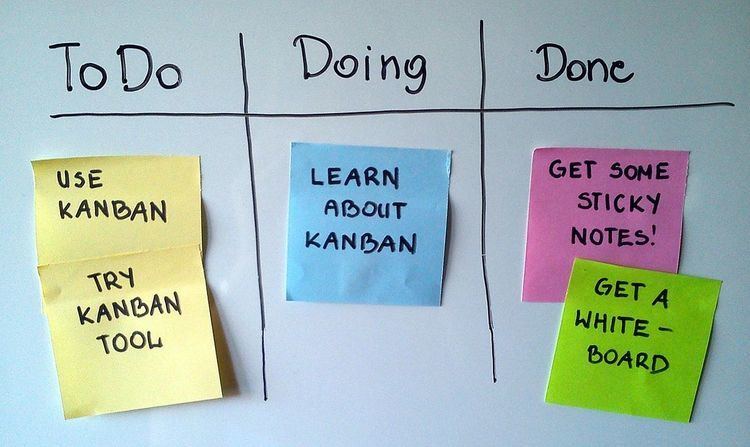 | ||
A kanban board is one of the tools that can be used to implement the Kanban Method for a project.
Contents
Kanban boards are perceived as a variation on traditional kanban cards. Instead of the signal cards that represent demand or capacity, the board utilizes magnets, plastic chips, colored washers or sticky notes to represent work items. Each of these objects represents an item in a production process as it moves around the board. Its movement corresponds with a knowledge work or manufacturing process. At its simplest, the board can be divided into three sections: "waiting", "work in progress" and "completed work". Complex kanban boards can be created that visualise the flow of work across a value stream map. Employees move cards to the section on the board that coincides with the activity it represents.
Application
Kanban can be used to organize many areas of an organisation and can be designed accordingly. The simplest kanban board consists of three columns: "to-do", "in progress" and "done", while some additional detail such as WiP limits are needed to fully support the Kanban Method. Business functions that use kanban boards include:
